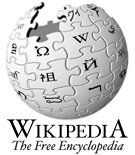The White Tower is a central tower, the old keep, at the Tower of London. It was started in 1078 by William the Conqueror who ordered the White Tower to be built inside the south-east angle of The City walls, adjacent to the River Thames. Its construction was supervised by Bishop Gundulf of Rochester Cathedral, a talented military engineer who built many Norman fortifications and went on to become the 'Father of the Corps of Royal Engineers'. [1] This was as much to protect the Normans from the people of the City of London as to protect London from outside invaders. William ordered the Tower to be built of Caen stone, which he had specially imported from France. The tower was finished around 1087 by his sons and successors, William Rufus and Henry I.
In the twelfth century, King Richard the Lionheart enclosed the White Tower with a curtain wall and had a moat dug around it filled with water from the River Thames. The moat was not successful until Henry III, in the thirteenth century, employed a Dutch moat-building technique. Henry refurnished the Chapel and had the exterior of the building whitewashed in 1240, which is how the tower got its name.
The White Tower is a massive construction, 90 feet (27.4m) high and 118 feet (35.9m) by 107 feet (32.6m) across, the walls varying from 15 feet thickness at the base to almost 11 feet in the upper parts. Above the battlements rise four turrets; three of them are square, but the one on the north-east is circular. This turret once contained the first Royal observatory. The four weather vanes on the turrets of the tower date from 1669. At the southeast corner is a semicircular protrusion which houses the Chapel of St. John.
Its walls are now home to displays from the Royal Armouries, including original armours worn by Henry VIII and Charles I plus a reconstructed display of the massive collection of weapons once housed in the Grand Storehouse. The 'Spanish Armoury' contains the Tower's historic instruments of torture, including the infamous block and axe.
Source: http://en.wikipedia.org/wiki/White_Tower_%28Tower_of_London%29
วันพุธที่ 29 กันยายน พ.ศ. 2553
Beautiful and Cute Thai girl 15+
The London Borough of Tower Hamlets (About this sound pronunciation (help·info)) is a London borough to the east of the City of London and north of the River Thames. It is in the eastern part of London and covers much of the traditional East End. It also includes much of the redeveloped Docklands region of London, including West India Docks and Canary Wharf. Many of the tallest buildings in London are located on the Isle of Dogs in the south of the borough. Tower Hamlets is one of five London boroughs which have been designated host boroughs for the 2012 Summer Olympics. The borough has one of the highest ethnic minority populations in the capital, consisting mainly of Bangladeshis.
Source: http://en.wikipedia.org/wiki/London_Borough_of_Tower_Hamlets
Source: http://en.wikipedia.org/wiki/London_Borough_of_Tower_Hamlets
วันพุธที่ 22 กันยายน พ.ศ. 2553
Sexy Asian Sport Girls 16+
British Railways (BR), which from the 1960s traded as British Rail, was the operator of most of the rail transport in Great Britain between 1948 and 1997. It was formed as a result of the nationalisation of the "Big Four" British railway companies and lasted until the gradual privatisation of British Rail in stages between 1994 and 1997. Originally a trading brand of the Railway Executive of the British Transport Commission, it became an independent statutory corporation in 1962: the British Railways Board.
The period of nationalisation saw sweeping changes in the national railway network; a process of dieselisation occurred which saw steam traction eliminated in 1968, in favour of diesel and electric power. Passengers replaced freight as the main source of business and one third of the network was closed by the Beeching Axe of the 1960s.
The British Rail "double arrow" logo is formed of two interlocked arrows showing the direction of travel on a double track railway and was nicknamed "the arrow of indecision".[1] It is now employed as a generic symbol on street signs in Great Britain denoting railway stations, and as part of the Association of Train Operating Companies' jointly-managed National Rail brand—being still printed on railway tickets.[2]
Source: http://en.wikipedia.org/wiki/British_Railways
The period of nationalisation saw sweeping changes in the national railway network; a process of dieselisation occurred which saw steam traction eliminated in 1968, in favour of diesel and electric power. Passengers replaced freight as the main source of business and one third of the network was closed by the Beeching Axe of the 1960s.
The British Rail "double arrow" logo is formed of two interlocked arrows showing the direction of travel on a double track railway and was nicknamed "the arrow of indecision".[1] It is now employed as a generic symbol on street signs in Great Britain denoting railway stations, and as part of the Association of Train Operating Companies' jointly-managed National Rail brand—being still printed on railway tickets.[2]
Source: http://en.wikipedia.org/wiki/British_Railways
สมัครสมาชิก:
ความคิดเห็น (Atom)




















































